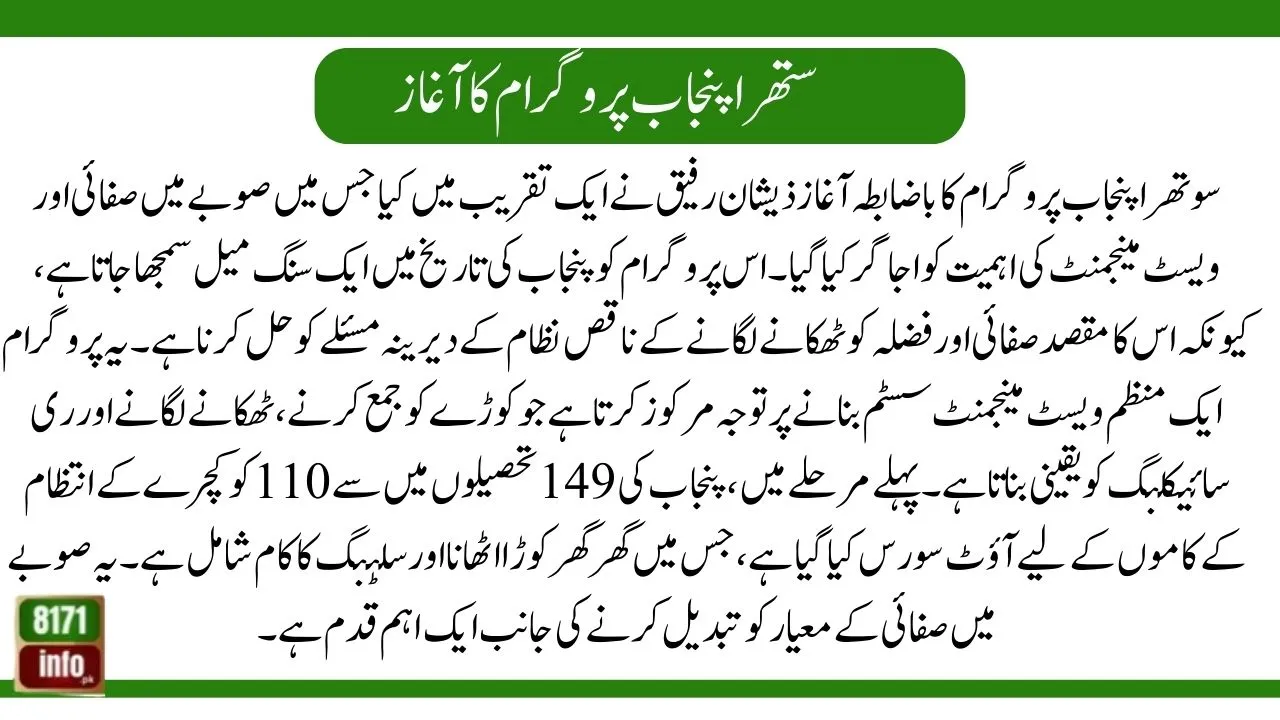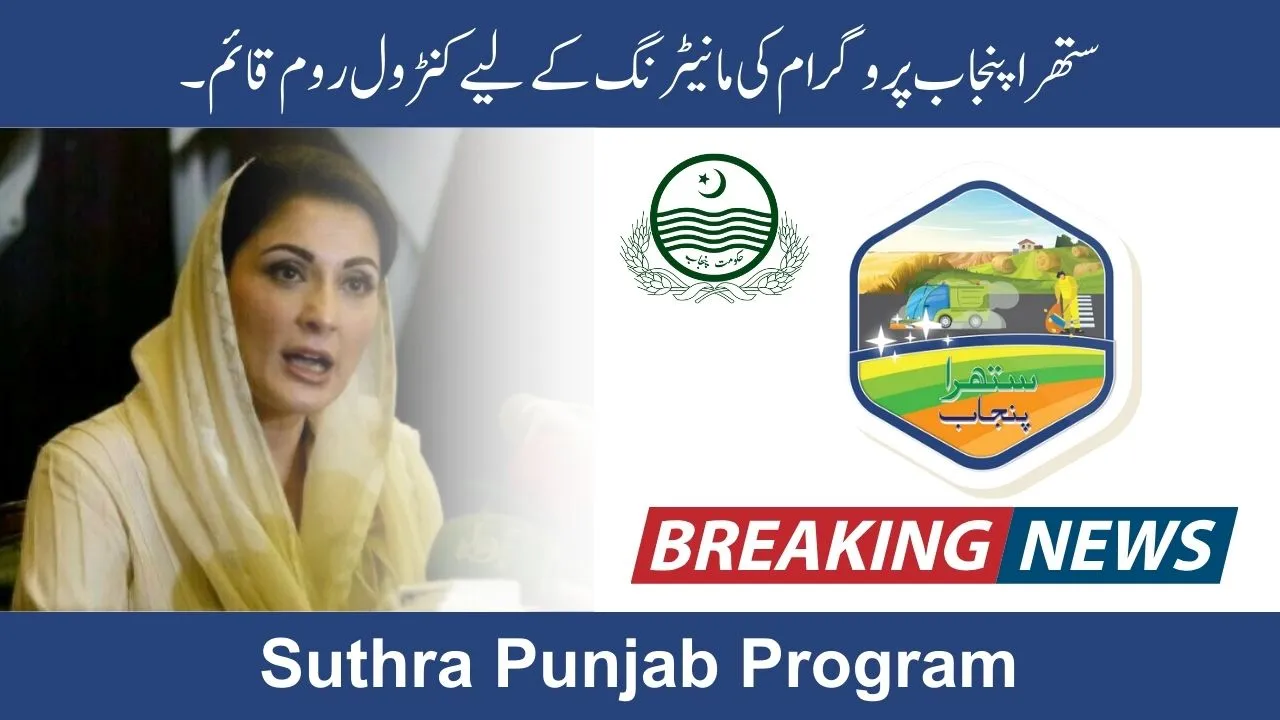The Punjab government has recently launched a significant initiative called the Suthra Punjab Programme, which aims to improve cleanliness and waste management across the province. A central control room has been set up at the provincial civil secretariat to ensure the effective implementation and monitoring of this program. Local Government Minister, Zeeshan Rafiq, visited the control room to oversee its functioning and to issue necessary instructions. The goal of this program is to create a cleaner and healthier environment for the residents of Punjab by improving waste management and sanitation systems at various levels. The control room serves as the hub for overseeing the work of waste management companies and ensuring the smooth operation of the initiative.
| Key Features of the Suthra Punjab Programme | Impact |
| AI-driven monitoring systems | Improved efficiency and transparency |
| Creation of 88,000 jobs | Boost to local employment |
| Outsourcing waste management in 110 tehsils | Efficient waste collection |
| Introduction of energy generation from waste | Sustainable waste management solutions |
Table of Contents
Launch of the Suthra Punjab Programme
The Suthra Punjab Programme was officially launched by Zeeshan Rafiq in a ceremony that highlighted the significance of cleanliness and waste management in the province. This program was considered a milestone in the history of Punjab, as it aims to address the long-standing issue of poor sanitation and waste disposal systems. The program focuses on creating a structured waste management system that ensures garbage collection, disposal, and recycling. In the first phase, 110 out of Punjab’s 149 tehsils have been outsourced for waste management operations, which includes house-to-house garbage collection and de-silting work. This marks a crucial step toward transforming the cleanliness standards in the province.

Role of Artificial Intelligence in Monitoring
- The Suthra Punjab Programme uses artificial intelligence (AI) to monitor and manage cleanliness efforts.
- AI-driven monitoring systems track the performance of waste management companies.
- The control room uses AI to monitor cleanliness levels, evaluate contractor performance, and address complaints in real time.
- AI aims to improve efficiency and transparency, reducing human error in the program.
- This technology will help track progress and ensure that the Chief Minister’s goals are achieved.
Provincial and Local Involvement
The program is being managed through a four-tier monitoring system that includes control rooms at the Tehsil, District, Divisional, and Provincial levels. Each level has specific responsibilities and is designed to ensure that issues are identified and addressed at the local level before they escalate. Local Government Minister Zeeshan Rafiq emphasized the need for cooperation from waste management contractors, district administrations, and citizens to achieve the program’s goals. The program has also created thousands of job opportunities, with around 88,000 jobs generated in its initial phase. This involvement of local authorities ensures that the program is tailored to the needs of each region and that there is accountability at every level.
Challenges and Solutions in Waste Management
Waste management in Punjab has been a challenging task due to insufficient machinery, resources, and a lack of structured systems. The province produces around 60,000 tons of waste daily, much of which has not been collected properly in the past. The Suthra Punjab Programme addresses these challenges by outsourcing waste management in 110 tehsils and procuring necessary machinery, including 25,000 vehicles and pieces of equipment. Additionally, the restructuring of the Lahore Waste Management Company (LWMC) is a key aspect of the program to improve waste collection in urban areas. The initiative aims to create safe dumping sites in each tehsil and introduce energy generation from waste in future phases.
Public Cooperation and Accountability
The success of the Suthra Punjab Programme heavily depends on public cooperation and active participation. Citizens are encouraged to use a mobile app to file complaints about sanitation issues. A penalty system has been put in place to ensure that complaints are addressed in a timely manner. This initiative is designed to involve the community in maintaining cleanliness and hold authorities accountable for their performance. Public support and cooperation are essential for the long-term sustainability of the program, as it aims to transform the cleanliness landscape of the entire province.

Conclusion
The Suthra Punjab Programme is a bold step toward improving sanitation and waste management in Punjab. With the establishment of control rooms, the use of advanced technologies like AI, and the involvement of local communities, this initiative has the potential to bring significant change to the province. By addressing the challenges of waste management, generating employment, and ensuring accountability, the program aims to create a cleaner, healthier Punjab. Public cooperation is crucial for the success of this program, and it is hoped that the people of Punjab will actively contribute to its goals.
Also Read: CM Punjab Honhaar Scholarship Program 2025 Apply Online Procedure
FAQs
What is the main objective of the Suthra Punjab Programme?
The main objective is to improve waste management and cleanliness across the province of Punjab.
How does artificial intelligence contribute to the program?
AI is used to monitor cleanliness, track waste management performance, and address complaints in real time.
What challenges does the Suthra Punjab Programme aim to address?
The program addresses issues such as insufficient waste management resources, improper garbage collection, and lack of structured sanitation systems.
How can citizens participate in the Suthra Punjab Programme?
Citizens can report sanitation issues through a mobile app, contributing to the program’s effectiveness by filing complaints and ensuring accountability.
